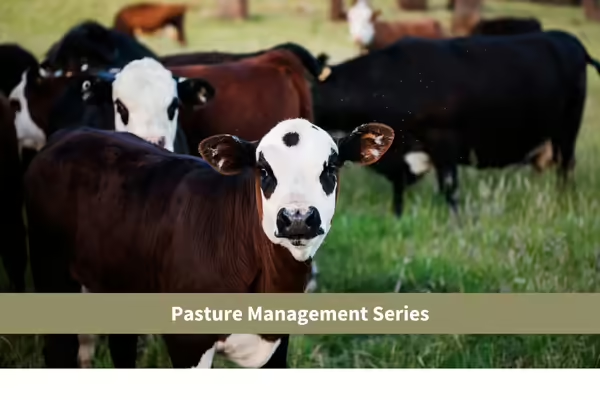
Why recover from 2023? Timely early-season rains, which help start crops off reasonably well, gave way to hot, dry conditions for the last half of the season. This resulted in many area pastures and hayfields ending the growing season in rough, beatdown conditions. Add to the short hay supply; spring 2024 will likely start with much demand for forages. Will the pastures and hay fields spring back to meet the demand? Are there management strategies that could make the most of available forages?
“Pasture Management: Recovering from 2023,” hosted by the University of Illinois Extension, will focus on recovering from the drought and short forage supply in three evening sessions. The sessions are intended to build upon each other by looking at options and management practices to make the most of existing resources, consider overlooked resources, and build future forage resources. The sessions will be held on consecutive Tuesday nights, March 12, 19, and 26, starting at 6:30 pm each evening at the Lena Community Center, 497 Lions Drive, Lena, IL.
The Pasture Management series is designed to help experienced and new livestock managers define a successful path forward. The focus of the individual 1.5-hour session will be:
- March 12: Pasture Options and Economics
- March 19: Pasture Recovery and Weed Control
- March 26: Keeping the pasture working
“There is data to back up our visual perceptions that pastures and forages were dry, and production was down last year,” commented Jay Solomon, Extension Educator, Natural Resources, Environment, and Energy. “Regionally, we have trended dry to moderate drought for much of the last three years. These long-term dry conditions have negatively impacted forage production in pasture and hayfields.” An example of the data is the water table level monitor at the State Water Survey’s WARM station in Freeport, which indicated a significant drop during late summer, ending 1.5 feet deeper than that a year before. Early in crop season, we had adequate moisture to raise the water table up to around 10 feet, but the level had a near-steady decline throughout the season down to a level below 21 feet.
Management tools can help forage crops bounce back from these conditions. Many of these tools can also help mitigate the impacts in the future. Many of these can be accomplished at no or minimal cost while reaping significant benefits and cost savings. Pasture renovation, weed control, utilization of hay and alternative forages, and harvest timing are among the topics that will be discussed.
To register or for more information, call the U of I Extension at (815) 235-4125 or online at go.illinois.edu/jsw; registration is required to attend. If you need a reasonable accommodation to attend this program, call (815) 235-4125.
Illinois Extension leads public outreach for University of Illinois by translating research into action plans that allow Illinois families, businesses, and community leaders to solve problems, make informed decisions, and adapt to changes and opportunities. Illinois Extension is part of the University of Illinois Urbana-Champaign College of Agricultural, Consumer and Environmental Sciences.